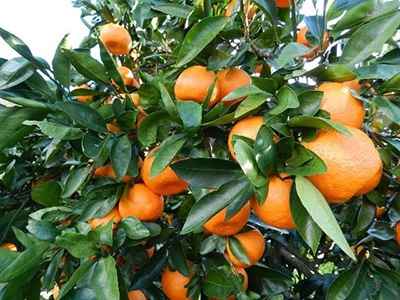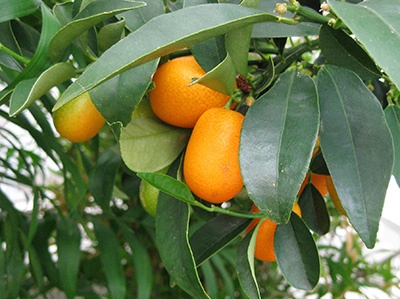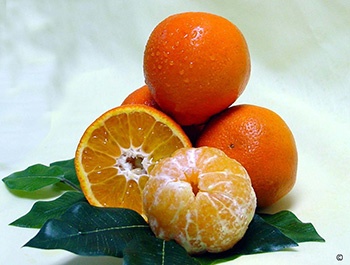Cold-Hardy Citrus
While North Florida gardeners can’t grow many of the tropical fruits that South Florida enjoys, luckily citrus is not one of them. Kumquats, calamondins, and two types of mandarins are hardy enough to withstand chilly winters.

Keep in mind these citrus-growing tips, whether you choose a cold-hardy variety or not:
- Choose a location with a wind break to reduce wind speed during freezes.
- Don’t plant trees in low-lying areas, where cold air can settle.
- If necessary, plant citrus in pots so you can bring them inside before freezes.
- If you’d like to plant a variety that is not cold hardy, then prioritize those that finish fruiting before the first frost.
- Plant new trees early in the spring to ensure the tree is well established before facing cold weather.
- Look for citrus trees that have been grafted onto particularly cold-hardy rootstocks such as sour orange or trifoliate orange.
Read on to learn more about the citrus we recommend for Northern Florida.
Satsuma
Satsumas are a type of mandarin orange and the classic selection for cold-hardy citrus. Trees are relatively small and low growing, and produce small, tangy fruits. This variety can withstand temperatures as low as 14°F, although the fruiting season is typically over by winter. ‘Owari’ is the most popular cultivar, and it consistently produces small- to medium-sized fruits. ‘Brown Select’ is another readily available cultivar that matures a couple weeks earlier than ‘Owari’, and also outcompetes it in terms of fruit and tree size.

Kumquat
Kumquats are also quite cold hardy; they can withstand temperatures as low as 16°F. The small, sweet-and-sour fruits start appearing in October and will continue through March. The two main cultivars to choose from are ‘Meiwa’ and ‘Nagami’. ‘Meiwa’ tends to be sweeter, less seedy, and round while ‘Nagami’ leans sour and is more oval-shaped. Attractive ornamental cultivars are also available, such as ‘Centennial’ with its variegated leaves and fruits.
Calamondin
Calamondins or calamansi are a cross between mandarins and kumquats, resulting in a small, sour fruit. Calamondins are cold hardy to 22°F, but it’s a good idea to provide cold protection to young trees until they get established. The trees tend to produce fruit prolifically year-round, which is ideal since the fruits don’t last long once harvested. Use calamondin fruits as you would lemons or limes for recipes.
Sugar Belle®

Sugar Belle® is a hybrid mandarin that was developed by the University of Florida to be more tolerant of HLB infection (also called citrus greening). It is also quite cold tolerant, withstanding temperatures as low as 18°F. The sweet-tart fruits ripen from November through December, just in time for the holidays. The UF/IFAS Citrus Research and Education Center has compiled a list of nurseries that sell Sugar Belle® trees to home growers.
Once you’ve decided which citrus you’d like to add to your landscape, check out our citrus article to learn more about planting, care, and harvesting. If you have any questions, please reach out to the experts at your county Extension office for advice.
